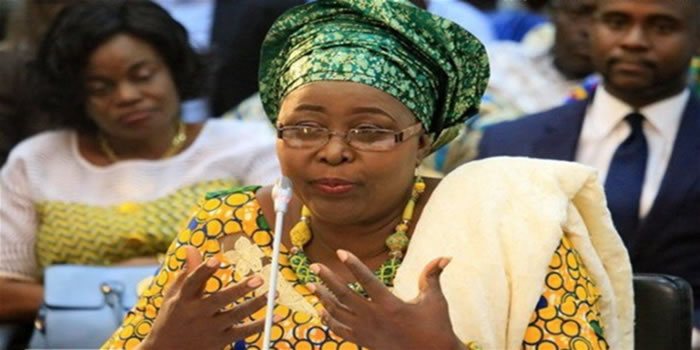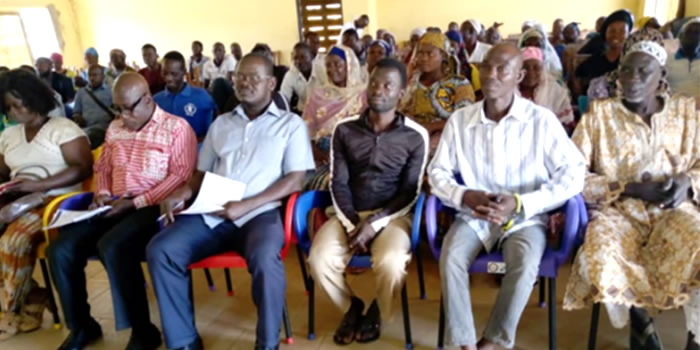

Main Types of Service Delivery
While the curative health delivery service is usually provided at the institutions pivoted at Abura Dunkwa, the entire structure is generally organized and oriented to provide the following:
Maternal Health Services, consisting of those to promote the health of women;
Antenatal Services, intended to enhance the health of pregnant women and the birth of healthy babies;
Post-natal Services, with aim at the health of newly delivered mothers and new-born in the first 6 weeks of life;
Family Planning Services, which assist individuals and couples in their productive ages to space out the children, prevent unwanted pregnancies and manage infertility;
Child Health Services including immunization;
School Health Services, which aim at promoting the health of school-going children through physical examination, health education, treatment of minor ailments and maintenance of a hygienic school environment; Nutrition Service, which concentrates on Health and Nutrition Education.
Top Five Reported Diseases
The top five diseases reported by the static institutions are (1) Malaria, accounting for 64 percent, (2) Yaws, 11 percent (3) Diseases of Skin, 9 percent, (4)Upper respiratory tract infection, 8 percent and diarrhoea diseases, accounting for 7 percent. As indicated earlier, the Survey reported the proportion of 66 percent for malaria, which suggests that if the war on malaria could successfully be fought a large portion of the health problems would be won by preventive action on the environment where the anopheles mosquito subsists and multiplies.
Access to drugs
The Survey results showed that 34 percent of those interviewed could not visit any health facility more than once in a year because of transport costs. Another 42 percent complained bitterly about the cost of drugs.
Environmental Health
The Environmental Health Division, currently within the office of the District Assembly and headed by a Director, supervises all environmental health and sanitation activities and programmes in the District. The Division operates in eight zonal stations which are also the headquarters of the eight Town/Area councils.They are Abura Dunkwa, Moree, Abakrampa, Asebu, Aboase, Amosima, Nyanfeku Ekroful and Ayeldu. Its activities include:
1. Waste Management
2. Maintenance and Control of food hygiene
3. Premises Inspection
4. Control of Animal Nuisance
The collection and disposal of both dry and wet refuse is currently a serious problem in the major settlements in the District. Refuse dumps at Abura Dunkwa, Moree, Abakrampa and Asebu are serious problems for alarms as disputes over land acquisition remain a hindrance to proper choice of land for dumping grounds. Similarly, inadequate provision of toilets generally contributes to the indiscriminate defecation on the outskirts of these towns. Happily, the DomesticToilet Scheme of the community and sanitation Division of the Ghana Water and Sewerage Corporation is fully supported by the District Assembly and has attracted the interest and patronage of many owners of houses as conditions for construction are very liberal and attractive, including a 50 percent subsidy.
Immunizations from Six-Killer Diseases
The Survey revealed that as high as 92 percent of the children had been immunized against the 6 killer diseases; 84 percent of them in their places of residence and 12 percent outside the District. Two-thirds of those interviewed indicated that malaria was the commonest cause of illness, distantly followed by skin diseases (5 percent), boil (5 percent), piles (4percent) and rheumatism (3 percent).
NHIS
ABURA-ASEBU-KWAMANKESE DISTRICT MUTUAL
Health Insurance Scheme
In case of reply the number and date of this letter should be quoted.
State of the Scheme as at September 2007
The Abura-Asebu-Kwamankese District Mutual Health Insurance Scheme started its operations on 1st December, 2005. As one of the activities of the scheme, the concept of DMHIS has continued to be in the domain of the public as sensitization is on-going. The following are the various charges fixed as premiums for the various categories of clients for 2007.
0100,000 for (students and apprentices 18yrs and above)
0120,000-0150,000 Adults (Informal Sector) Non Working Class.
0150,000-0250,000 Adults (Informal Sector) Working Class.
0300,000-0500,000 (Rich and Very Rich people).
The principle of cross-subsidization has been in place since the beginning of our operations.
Status of Implementation
The Abura-Asebu-Kwamankese District Mutual Health Insurance Scheme has from January to September 2007 registered a total of 55.116 people. The breakdown is shown below to reflect the various groups of clients.
Informal Contributors (fully paid) 3811
Exempt Group
SSNIT Contributors 2006
(SSNIT Pensioners 301
Children Under 18 yrs 45218
70Yrs and Above 4038
(Indigents 489
Total ID Cards issued are 37690, with 4395 for informal and 33295 for exempt. The scheme has collected a total premium of 0432820200 over the period from January-sept 2007. Total number of field workers (collectors) for the AAK Scheme is 36 people spread over the district.
Achievement Including Claims Paid, Hospital Encounters made by Beneficiaries and Testimonies of Beneficiaries
Total money paid to providers as claims for the period January to sept. 2007 is ¢1,145,591,580. 0174,741,103 is the money paid for Lab, 0169,882,525 and 0 362,141,122 are for services and Drugs for OPD and 0143,998,187 and 0294,828,643 are for services and drugs for in-patients.
The Major Challenges:
Office Space
The Scheme hemmed into a two bed room and small hall office and this is even a rented premise
Personnel
The scheme has only five permanent staff.
Security
Lack of Accredited Pharmacist and Chemical Sellers
Lack of Motivation
Main Types of Service Delivery
While the curative health delivery service is usually provided at the institutions pivoted at Abura Dunkwa, the entire structure is generally organized and oriented to provide the following:
Maternal Health Services, consisting of those to promote the health of women;
Antenatal Services, intended to enhance the health of pregnant women and the birth of healthy babies;
Post-natal Services, with aim at the health of newly delivered mothers and new-born in the first 6 weeks of life; Family Planning Services, which assist individuals and couples in their productive ages to space out the children, prevent unwanted pregnancies and manage infertility;
Child Health Services including immunization;
School Health Services, which aim at promoting the health of school-going children through physical examination, health education, treatment of minor ailments and maintenance of a hygienic school environment; Nutrition Service, which concentrates on Health and Nutrition Education.
Top Five Reported Diseases
The top five diseases reported by the static institutions are (1) Malaria, accounting for 64 percent, (2) Yaws, 11 percent (3) Diseases of Skin, 9 percent, (4)Upper respiratory tract infection, 8 percent and diarrhoea diseases, accounting for 7 percent. As indicated earlier, the Survey reported the proportion of 66 percent for malaria, which suggests that if the war on malaria could successfully be fought a large portion of the health problems would be won by preventive action on the environment where the anopheles mosquito subsists and multiplies.
Postal Services
There are six postal Agencies located at Abura Dunkwa, Moree, Asebu, Abakrampa, Nyanfeku Ekroful and Aboase. Administratively, the Abura Dunkwa postal agency co-ordinates the activities of the postal agencies at Nyankumasi, in Lower Assin, Aboase and Nyanfeku Ekroful. Similarly, the postal agency at Abakrampa is responsible to the Asebu, postal agency. Moree is administratively under the Cape Coast Post Office. Besides the traditional services related to mails, the postal agencies at Abura Dunkwa, Asebu, and Moree, deal in postal money transfers within Ghana in the form of Money Orders, etc. in this form, remittances are regularly made by relatives living in other places in Ghana to relatives at home in the District. The Abura Dunkwa Postal Agency boasts of a newly constructed modern Post Office built by Ghana Post.
Telecommunication
There are currently 3 facilities viz, Areeba, One touch, and Tigo and in the District and are located in Abura Dunkwa. Also there are about 5 postal agencies and one post office in the district.
Transportation
The transport network in the District consists of the types of motor roads, namely: the major first class highway, the all-year accessible roads and the dry-season accessible roads. The first class asphalt highway constructed in the late eighties is the Fosu-Abura Dunkwa-Cape Coast road.This highway has a corridor along which settlements with a combined population accounting for 20.1 percent of the total population of the District are clustered.
The all-year accessible roads, noted for their pot holes, consist of roads which branch off from the highway at Kwadowegya and Abura Dunkwa south-eastwards to Afrangua at the south-eastern end of the District and the Moree Junction to Moree Junction to Moree town, the most populous settlements containing 31.5 percent of the population of the District.The third category is approximately the mainly dry-season accessible roads, noted for their pots holes, consist of roads which branch off from the highway at Kwadowegya and Abura Dunkwa south - eastwards to Afrangua at the south-eastern end of the District and at the Moree Junction to Moree town, the most populous settlement in the District.
These three roads also have corridors of settlements containing 31.5 percent of the population of the District.The third category is approximately the mainly dry-season accessible roads, some parts of which are all-year road, branching westward, north-westwards and south westwards from the Fosu-Cape Coast highway. They are:
Asebu-Esuoso towards Kuruwa
Asebu-Abakrampa-Nyamedom-Esuaso
Abakrampa-Pagagya-Akukorkrom
Highway Junction -Amosima
Asebu-Putubiw-Apewosika
Nyankefu Ekroful-Abakrampa
Tuakwa-Abora
Abura Denkyira -Enyinabrim
These roads also have corridors along which settlements account for 23.1 percent of the population. The conclusion based on the foregoing situational analysis is that, contrary to the general picture often given, the District is well served with a reasonable inadequate road network, the one obvious exception being the north-eastern area of Abura Dunkwa, referred to as the Abura Dunkwa Lands, that is the area towards Nyamebobu and Assin Kumasi.
`The foregoing road network serves more than three-quarters of the population of the District. The main development problem is the condition of the latter two types of roads characterised to a large extent by mud and potholes during the rainy season and making accessibility difficult and costly, thus adversely affecting the movement of goods and people. Maintenance of motor roads will continue to be the key problem associated with the transportation network, if appropriate action is not taken.
Date Created : 11/13/2017 5:01:52 AM











 facebook
facebook
 twitter
twitter
 Youtube
Youtube
 +233 593 831 280
+233 593 831 280 0800 430 430
0800 430 430 GPS: GE-231-4383
GPS: GE-231-4383 info@ghanadistricts.com
info@ghanadistricts.com Box GP1044, Accra, Ghana
Box GP1044, Accra, Ghana